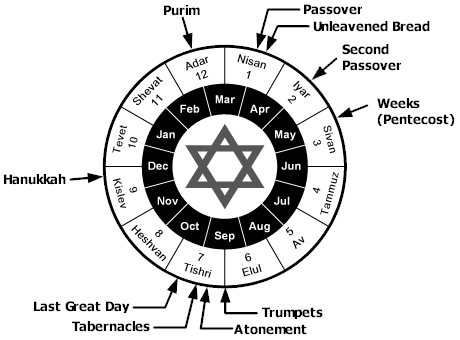
Jewish Calendar
The Jewish calendar is lunisolar—i.e., regulated by the positions of both the Moon and the Sun. It consists usually of 12 alternating lunar months of 29 and 30 days each (except for Heshvan and Kislev, which sometimes have either 29 or 30 days), and totals 353, 354, or 355 days per year.The average lunar year (354 days) is adjusted to the solar year (365¼ days) by the periodic introduction of leap years in order to assure that the major festivals fall in their proper season. The leap year consists of an additional 30-day month called First Adar, which always precedes the month of (Second) Adar. (During leap year, the Adar holidays are postponed to Second Adar.) A leap year consists of either 383, 384, or 385 days and occurs seven times during every 19-year period (the so-called Metonic cycle). Among the consequences of the lunisolar structure are these: (1) The number of days in a year may vary considerably, from 353 to 385 days. (2)The first day of a month can fall on any day of the week, that day varying from year to year. Consequently, the days of the week upon which an annual Jewish festival falls vary from year to year despite the festival’s fixed position in the Jewish month. The months of the Jewish calendar and their Gregorian equivalents are as follows:
JEWISH MONTH GREGORIAN MONTH(S)
Tishri September–October
Heshvan, or Marheshvan October–November
Kislev November–December
Tevet December–January
Shevat January–February
Adar February–March
Nisan March–April
Iyyar April–May
Sivan May–June
Tammuz June–July
Av July–August
Elul August–September




















0 comments:
Post a Comment